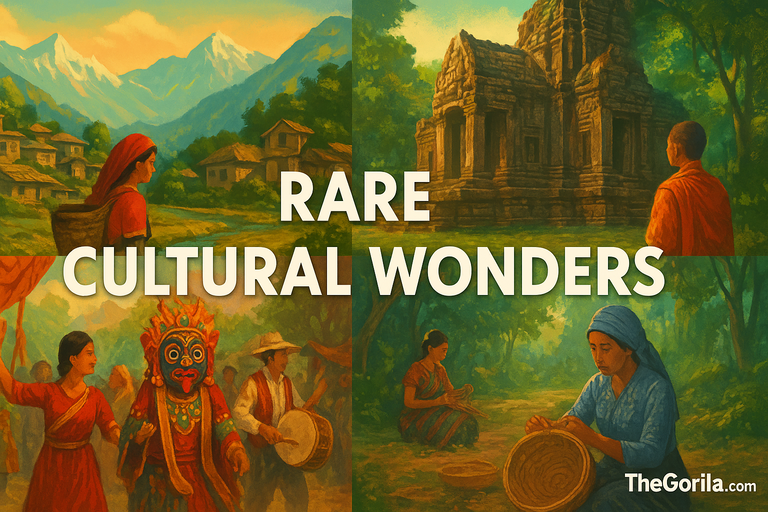Inside Himalayan Culture: Hidden Traditions of Remote Mountain Communities
The Himalayas are more than a majestic mountain range; they are the cradle of one of the world’s most fascinating and resilient cultural ecosystems. Himalayan Culture is a living testament to centuries-old traditions, spiritual practices, and unique lifestyles that have survived in some of the most remote and challenging environments on Earth. From ancient rituals and vibrant festivals to the art, food, and architecture of mountain communities, the Himalayas offer a glimpse into a world where heritage thrives in harmony with nature.
Travelers seeking authentic experiences in these regions can uncover centuries-old practices in places like Skardu and its hidden cultural gems, where local traditions remain woven into the fabric of daily life. To understand how geography and environment shape such communities, resources from National Geographic provide valuable insights into the interplay between isolation, culture, and survival in high-altitude areas.
Table of Contents
Geography & Origins of Himalayan Culture
The physical geography of the Himalayas has played a crucial role in preserving Himalayan Culture. Towering peaks, deep valleys, and rugged terrain created natural isolation, allowing indigenous communities to maintain customs, rituals, and lifestyles largely untouched by external influence.
Early Tribes and Spiritual Evolution
From the earliest migrations to the formation of unique tribes, the Himalayas have always been a crossroads of spiritual and cultural evolution. The region hosts a rich tapestry of religious influences, including Buddhism, Hinduism, Bon, animist beliefs, and shamanic traditions. These practices are not just rituals; they are integral to the daily life of villages, governing everything from agricultural cycles to health, education, and social cohesion.
Communities in the remote valleys of Hunza and its hidden travel gems exemplify how isolation allows cultures to flourish independently, preserving unique languages, traditional governance structures, and ceremonial practices that have persisted for centuries.
Daily Life in Remote Himalayan Villages
Village Structure and Community Life
Traditional Himalayan villages are marvels of adaptation. Homes built from stone and wood blend seamlessly with the surrounding landscape, often clustered around communal courtyards or local monasteries. Community life is central; cooperation in farming, building, and celebrations ensures survival in harsh environments.
Livelihoods and Traditional Skills
Residents rely on terrace farming, yak herding, and artisanal crafts such as weaving and wool production. Seasonal migrations and specialized trades, adapted to altitude and climate, form the backbone of village economies. Observing these lifestyles offers a rare glimpse into societies that remain deeply connected to both land and tradition. For further exploration of similar traditions, readers can dive into other hidden cultural gems across remote regions where centuries-old practices are still alive.
Rituals, Festivals & Spiritual Practices
Rituals That Define Life
Fire rituals, purification ceremonies, and seasonal rites form the spiritual backbone of Himalayan communities. These rituals, often conducted by shamans or monks, are more than symbolic—they guide daily life, health practices, and agricultural success.
Festivals of the Himalayas
Festivals such as Losar, Saga Dawa, and various harvest celebrations involve elaborate dances, music, and colorful masks. These festivals not only honor spiritual beliefs but also reinforce communal bonds and cultural identity.
Shamans, Monks, and Spiritual Leaders
Spiritual leaders, including monks and shamans, play a vital role in village life. From healing ceremonies to trance rituals, they maintain a link to ancestral knowledge, ensuring that Himalayan Culture remains vibrant and resilient. The spiritual depth of these communities is further illuminated in studies documented by National Geographic, which explore how environment and tradition are intricately connected.
Art, Clothing & Symbolic Architecture
Traditional Clothing and Meaning
Himalayan clothing is not only functional but deeply symbolic. Wool garments, brightly colored fabrics, and ornate jewelry reflect regional identity, social status, and spiritual beliefs. Each piece, whether worn in Ladakh, Bhutan, Nepal, or Gilgit-Baltistan, tells a story of resilience and adaptation.
Art and Craftsmanship
Art in the Himalayas ranges from intricate Thangka paintings and monastery murals to wood carvings and handwoven textiles. These creations are not merely decorative; they carry cultural narratives and spiritual symbolism. The artistry found in Himalayan communities often mirrors the traditions preserved in regions like Skardu and Hunza, highlighting the continuity of mountain culture.
Food Heritage and Culinary Traditions
Everyday Mountain Cuisine
Himalayan food is shaped by the climate and altitude. Staples such as barley, yak meat, fermented dairy, and mountain herbs dominate the diet. These foods are not only nutritious but deeply embedded in cultural practices.
Ritual Foods and Festival Dishes
During festivals, food becomes ceremonial. Special dishes, prepared with precision and reverence, symbolize abundance, community, and spiritual harmony. Sharing meals is an expression of hospitality and cultural identity that strengthens the bonds of village life.
Preservation Challenges in Modern Times
Cultural Erosion and Global Influence
Despite the resilience of Himalayan Culture, modern pressures such as migration, tourism, and globalization threaten its continuity. Young generations often leave villages for education or employment, which can weaken the transmission of traditional knowledge.
Local and Global Preservation Efforts
Communities, elders, monasteries, and NGOs are actively working to preserve these traditions. These efforts mirror preservation initiatives in other remote regions, documented in Exploring Hidden Cultural Gems, ensuring that rituals, crafts, and festivals continue to thrive for future generations.
Importance of Himalayan Culture Today
Lessons in Sustainability and Community
Himalayan communities demonstrate remarkable harmony with nature. Their sustainable farming, resource management, and communal living offer lessons in resilience and environmental stewardship.
Ethical Travel and Cultural Engagement
Visitors can engage with these communities responsibly by supporting local artisans, participating in festivals respectfully, and learning about their spiritual practices. Experiencing Himalayan life firsthand allows travelers to appreciate its global significance, a perspective reinforced by studies from National Geographic.
Conclusion
Himalayan Culture is a living, breathing legacy of human resilience, creativity, and spiritual depth. From rituals and festivals to clothing, art, architecture, and food, these mountain communities provide a window into traditions that have survived for centuries. By traveling responsibly and appreciating the intricate fabric of life in the Himalayas, visitors not only witness a unique culture but also contribute to its preservation. The lessons from these communities—resilience, unity, harmony with nature, and deep respect for heritage—remain relevant for the world today.






